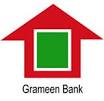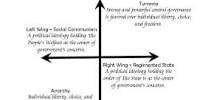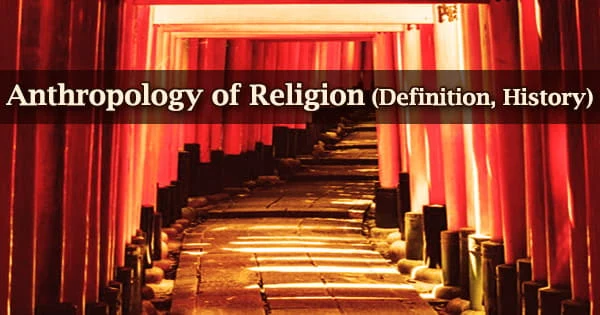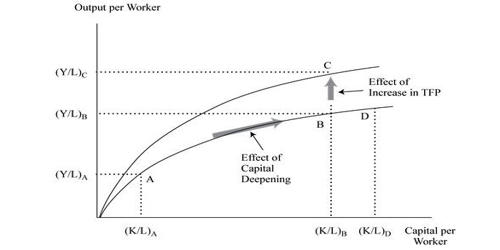Introduction
The story behind the first concerted effort to make financing accessible to the worlds poorest is the stuff of folklore. Befitting the goal of poverty alleviation, the setting for this early experiment was a time of great tragedy in Bangladesh, one of the poorest countries in the world. A small country in the Indian subcontinent with a population of 130 million, a gross national product (GNP) per capita of about $300 and a literacy rate of only
38 percent for those over 15 years of age, 1 Bangladesh experienced drought and famine in
1974 that killed 1.5 million people (Macfarlane 2002). Having recently completed studies as a Fulbright scholar in the United States, Professor Mohammad Yunus was lecturing on economic theory at Chittagong University and growing increasingly frustrated at his inability to ease his neighbors’ suffering.
Yunus attributes the origin of his vision to a chance encounter in Jobra with Sufia Begum, a 21-year-old woman who, desperate to support herself, had borrowed about 25 cents from moneylenders charging exorbitant interest rates approaching 10 percent per day. Ms. Begum used the money to make bamboo stools that, as a condition of the loan, she sold back to the moneylenders at a price well below market value for a profit of about of 2 cents (Yunus 2003). Ms. Begum’s desperate position could best be described as bonded labor.
In 1976 Professor Muhammad Yunus and his Colleagues of the Chittagong University started giving out tiny loans under a system, which later become known as the Grameen Bank (GB). Grameen Bank (GB) has reversed conventional banking practice by removing the need for collateral and created a banking system based on mutual trust, accountability, participation, and creativity. GB provides credit to the poorest of the poor in rural Bangladesh, without any collateral. At GB, credit is a cost effective weapon to fight poverty and it serves as a catalyst in the overall development of socio-economic conditions of the poor who have been kept outside the banking orbit on the ground that they are poor and hence not bankable. Professor Muhammad Yunus, the founder of “Grameen Bank” and its Managing Director, reasoned that if financial resources can be made available to the poor people on terms and conditions that are appropriate and reasonable, “these millions of small people with their millions of small pursuits can add up to create the biggest development wonder (Grameen Info, 1998). The action research demonstrated its strength in Jobra (a village adjacent to Chittagong University, Bangladesh) and some of the neighbouring villages during 1976-1979. With the sponsorship of the central bank of the country and support of the nationalized commercial banks, the project was extended to Tangail district (a district north of Dhaka, the capital city of Bangladesh) in 1979. With the success in Tangail, the project was extended to several other districts in the country. In October 1983, the Grameen Bank Project was transformed into an independent bank by government legislation. The rural poor whom it serves own today Grameen Bank. Borrowers of the Bank own 90% of the shares of the bank, while the government owns the remaining 10%. Over the time, that tiny effort became a leading economic theory of the present world. Now it has more than 2.3 million borrowers, 94 percent of whom are women. With 1,128 branches, GB provides services in 38,951 villages, covering more than half of the total villages in Bangladesh. The repayment of its loan, which average US $ 160, is over 95% (Grameen Info, 2002a).
A Short History of Grameen Bank
The origin of Grameen Bank can be traced back to 1976 when Professor Muhammad Yunus, Head of the Rural Economics Program at the University of Chittagong, launched an action research project to examine the possibility of designing a credit delivery system to provide banking services targeted at the rural poor. The Grameen Bank Project (Grameen means “rural” or “village” in Bangla language) came into operation with the following objectives:
- Extend banking facilities to poor men and women;
- Eliminate the exploitation of the poor by money lenders;
- Create opportunities for self-employment for the vast multitude of unemployed people in rural Bangladesh;
- Bring the disadvantaged, mostly the women from the poorest households, within the fold of an organizational format which they can understand and manage by themselves; and
- Reverse the age-old vicious circle of “low income, low saving & low investment”, into virtuous circle of “low income, injection of credit, investment, more income, more savings, more investment, more income”.
The action research demonstrated its strength in Jobra (a village adjacent to Chittagong University) and some of the neighbouring villages during 1976-1979. With the sponsorship of the central bank of the country and support of the nationalized commercial banks, the project was extended to Tangail district (a district north of Dhaka, the capital city of Bangladesh) in 1979. With the success in Tangail, the project was extended to several other districts in the country. In October 1983, the Grameen Bank Project was transformed into an independent bank by government legislation. Today Grameen Bank is owned by the rural poor whom it serves. Borrowers of the Bank own 90% of its shares, while the remaining 10% is owned by the government.
Significance of the study
Grameen Bank is a well established organization of Bangladesh. It is playing a vital role in the eradication of poverty from our country. Through preparing this assignment we can gather huge knowledge about it, its function, its organization, management, policy .future plan etc. Moreover this will enhance our thinking capacity; we can be familiar with the banking sector of our country
Objective of the study
Primary objective:
The first and most important objective of the assignment is to gather knowledge about Grameen Bank, its function, management, Accounting policy, marketing strategy and its future plan.
Secondary objective:
- Helps to acquire knowledge and skills needed to carry out rights and responsibilities.
- Increasing thinking skills and decision making process.
- Information and ideas.
- Increasing our vocabulary.
- Completion of the assignment given by our course teacher.
- Use our skills in finding, comprehending, organizing and communicating with others.
Methodology
We collected our necessary information for preparing this assignment from secondary sources like books, journal, newspaper & magazine. We also visited different sites of internet including the official website of Grameen Bank for data collection.
Literature review
Micro Credit
Micro credit is the most talked about topic in the whole world at the moment. Micro credit emerged as a revolutionary tool to fight poverty in the different parts of the world. Micro credit, in the recent years, proved that it become a effective tool to help the poor population of a country who get neither the World Bank/IMF aid which is given for them nor the governmental help. In the question of poverty alleviation micro credit become the rival of WB/IMF prescription. In this paper the effort would be to define and describe micro credit the whole new world-shattering idea that is fighting against the vicious circle of poverty. To achieve that, Grameen Bank (GB) the pioneer of the micro credit movement, would be taken as a model to define the micro credit and its operating systems. At the same time, success stories from different parts of the world would be described as the tangible evidence.
Micro credit is the practice of extending small loans to people in poverty so that they can start small businesses and develop savings. It is the extension of small loans to entrepreneurs too poor to qualify for traditional bank loans (Micro credit Summit, 1997). Definitions defer, of course, from country to country. Some of the defining criteria used include- size – loans are micro, or very small in size target users – micro entrepreneurs and low-income households utilization – the use of funds – for income generation, and enterprise development, but also for community use (health/education) etc. terms and conditions – most terms and conditions for micro credit loans are flexible and easy to understand, and suited to the local conditions of the community.
Vision
The most important aspect of Grameen intervention is that the vision of a poverty free society expounded by the Grameen leadership has been fostered among the important stakeholders management, operating staff and bank members. They all share the same vision and values. This vision has enormous impact upon the organisational functioning of the system. All the stakeholders are convinced that poverty is a man-made phenomenon exacerbated by the prevailing institutional forces. Poverty could be eradicated if concerted efforts were taken. This particular vision is really the driving force for the whole Grameen family to work with dedication, mutual trust, a sense of accountability and creativity.
Grameen Bank’s Ownership
From the beginning, the poor women have bought shares of Grameen Bank with their tiny savings. They have been working tirelessly to keep the bank strong, because they know that this is their bank. But now they are very upset that their bank’s ownership is questioned by the government. A shocking question has been placed in front of the Inquiry Commission. The 8.4 million poor women, the people of the country, will anxiously wait for the answers given by the Commission. All those interested in women’s empowerment all over the world will also be waiting them.
Grameen Trust
To spread the concept of Grameen Bank all over the world for alleviating poverty, Grameen Trust was formed in 1989. It is a company limited by guarantee. Initially, this institution started its activities by taking loan amounting to taka 26 thousand. At present this institution has been run by grant and loan. Among the 5 members of the Board of Directors of this institution, 4 members are the employees of Grameen Bank. Dr. Muhammad Yunus is the chairman of Grameen Trust. Four employees of Grameen Bank have given guarantee in forming this institution.
Micro Credit & United Nations
The objective of the First United Nations Decade for the Eradication of Poverty (1997-2006), proclaimed by the General Assembly in its resolution 50/107 or 20 December 1995, is to achieve the goal of eradicating absolute poverty through national action and international cooperation. Progress on the anti-poverty front was last reported to the General Assembly in the report to the Secretary-General entitled “Observance of the International Year for the Eradication of Poverty (1996) and recommendations for the rest of the Decade” (A/52/ 573)(UNPAN, 1996). The General Assembly, in its resolution 52/194 of 18 December 1997, noted that, in many countries micro credit programs have proved to be an effective tool in freeing people from poverty and have helped to increase their participation in the economic and political processes of society. Among other provisions, the Assembly called upon the relevant organs, organizations and bodies of the United Nations system, in particular its funds and programs and the regional commissions, as well as relevant international and regional financial institutions and donor agencies involved in the eradication of poverty, to explore including the micro credit approach in their programs as a tool for the eradication of poverty. The assembly requested the Secretary-General, in collaboration with relevant organizations of the United Nations system, including funds and programs and the World Bank, to submit to it at its fifty-third session a report on the role of micro credit in the eradication of poverty.
Micro Credit & World Bank/IMF
Though it is not admitted officially, the third world countries of the world are ruled mostly, not by the government but by the prescription of the World Bank and IMF. World Bank and IMF give loan for the poorest people of the poorest countries of the world and at the same time give some kinds of pre-requisites to get that loan. These pre-requisites are called the prescriptions. From the general trend, it is seen that the 90% of the available loan are used up to get the loan, paying the WB/IMF consultants and the bureaucrats of the government. Remaining 10% managed to get the mid level but never reached the grass-root level.
Primary health care and basic education are two critical tools for ending poverty. The World Bank distributes more than $20 billion in loans to developing countries every year, and can have an immense impact on the extent to which these services are available to the poorest of the world’s citizens. In 1996 and 1997, World Bank President Jim Wolfensohn promised members of Congress that he would increase Bank lending for health and education to $15 billion over three years, with an increased share focused on primary services for the poorest. Despite his promises, lending for health and education dropped from roughly $4 billion in 1996 to just about $2.25 billion in 1997 (World Bank, 1998).
Awards Received by Grameen Bank
- SWITZERLAND : Aga Khan Award For Architecture : 1989
- BELGIUM : King Baudouin International Development Prize : 1993
- BANGLADESH : Independence Day Award : 1994
- MALAYSIA : Tun Abdul Razak Award : 1994
- UNITED KINGDOM : World Habitat Award : 1997
- INDIA : Gandhi Peace Prize : 2000
- U.S.A. : Petersberg Prize : 2004
- Norway : Nobel Peace Prize : 2006
Coping with Crises
1995 Boycott Movement
In 1995, Grameen Bank experienced its first major operational crisis. Men in the communities joined local politicians who disapproved of the bank’s mission of turning women into entrepreneurs and pressured borrowers to stop repaying loans. This boycott movement explicitly challenged Grameen Bank to eliminate a charge imposed on borrowers who chose to leave a borrowing group.
At the time of this movement, Grameen Bank had already become a politically charged and financially powerful institution. While Grameen had avoided many of the political and relationship pitfalls that other emerging-market banks encounter, its success had attracted the unwelcome attention of male chauvinists and religious fundamentalists who were unhappy with the power that was being put into the hands of women. Some women were targeted, and other nongovernmental organizations providing health and educational services became the targets of sustained attacks from these fundamentalists (Lucas and Kapoor 1996).
The boycott proved quite successful at dropping repayment rates and punctured the aura surrounding the near–100 percent repayment record that had distinguished Grameen from other charitable and government programs. Even after Grameen agreed to remove the charge in order to settle the boycott, repayment rates were slow to recover, as many borrowers believed there were no significant consequences to defaulting.
1998 Floods
The bank was still emerging from the challenge of the boycott movement when in 1998 floods ravaged the country, leaving much of the population without homes and businesses. The bank went into the bond markets and received a Tk 1 billion loan from the Central
Bank of Bangladesh and a Tk 2 billion loan from commercial banks in Bangladesh to cover massive defaults and to disburse new loans to borrowers who had been made destitute. Old loans were not forgiven, however, and the increasing burden of debt overwhelmed many borrowers, resulting in lower repayment rates and some dropouts from the Grameen system
Issues of Transparency and Credibility
These incidents provided Grameen’s management with important information about weaknesses due to rigidity in the loan process. Under the classic Grameen Bank model, borrowers who were late in their loan payments were banned from the loan process until they had repaid in full. This approach left individuals with loans in arrears with few options, as they lacked access to credit and savings to meet fixed interest and principal payments and renter the loan process. Instead of acting as a deterrent against default, the process posed a moral hazard; women in danger of defaulting took unnecessary risks to remain in the Grameen system lest they lose all access to credit, as well as any chance of escaping abject poverty. Since the Grameen Bank’s clients are predominantly the very poor, these individuals had very little to lose and everything to gain by remaining in the Grameen system.
Critics accused Grameen Bank of unwillingness to fully disclose the impact of these crises on its financial position. These critics argued that reluctance to disclose losses was characteristic of other microfinance institutions eager to see microfinance survive and thrive and did not systematically evaluate the industry’s strengths and weaknesses. Poor management of these disclosures compounded the damage the problems did to Grameen Bank’s image, and the media, which had uniformly lauded the global development movement for several years, now widely criticized Grameen and the microfinance industry for their lack of transparency and questionable results.
Findings
Before preparing this assignment we were totally in dark about this organization and its function. But when we started dealing with this topic we came to know details about this organization. What we have found from this assignment are given below:
- Large number of branches whole through the country even its function is spread out in some countries of the world.
- Its huge amount of call up and paid up capital which was beyond our imagination.
- It’s working in a different way than the normal banking sector of our country.
- It’s playing a vital role in reducing the poverty from our country.
Limitation of the data collection
i. Time Limitation: as our submission date of assignment is 12th April we can’t get enough time to collect necessary data for enriching the assignment.
ii. Budgetary Limitation: we are living in developing country & we are also student that’s why we don’t have sufficient money to spend for betterment of the assignment.
iii. Internet Limitation: In our country the internet service is too slow that’s why we can’t access to internet so easily and find the data.
iv. Shortage of necessary books: There are lackage of sufficient books in our campus library about this topic.
v. Political crises: The present political condition of our country isn’t so good which creates hindrance on the way of preparing the assignment.
Conclusions and Recommendations
- According to the article 152 of the Constitution of the People’s Republic of Bangladesh, Grameen Bank is a Statutory Public Authority, since it was established in 1983 under an Ordinance. It is neither a NGO nor a bank /a bank company / a scheduled bank in traditional term. Although its micro credit activities are similar to that of an NGO, government possesses 25% ownership of that institution by law. But government didn’t take that opportunity and it owns only 3.29% of the ownership. Thus, government must have to set it right in terms of ownership.
- Government didn’t take any effective initiative over a period of twelve years to rectify irregularities such as- the continuation as Managing Director by Dr. Mohammed Yunus after end of his tenure mentioned in the inspection report on GB by Bangladesh Bank submitted in 1999. It is needless to mention that present situation would not arise if timely initiatives were taken. It is a matter of investigation to identify the social, economic or political reasons behind inaction of the government.
- Due to the expansion of micro credit program and other activities, Grameen Bank has become a large institution. But the tendency of violation of rules and regulations has been observed in almost all operations such as administrative decision, purchasing activities, the role of directors in the Board of Directors, establishment of company/institutions outside of Grameen Bank, use of fund, intercompany fund transfer etc. In fact, it has grown up as a person oriented 43 institution instead of a system oriented one. In these circumstances, at first a national policy has to be formulated to make the activities and poverty eradicating efforts of Grameen Bank effective where ensuring recovery of the collateral free loan disbursed to the landless poor in rural areas. The governance of micro credit, Grameen Bank and its associate institutions should be emphasized in formulating such policy. These policies have to be compiled in order to amend the necessary regulatory structure.
- At the next stage, ‘Grameen Bank Reformation Commission’ has to be formed and a new act has to be drafted by the experts. According to the decision of the committee, following steps should be considered:
- A regulatory authority is a must for any credit providing organization. It will ensure the proper use of assets and good governance. Even though Grameen Bank is a microcredit institution, according to Microcredit Regulatory Authority Act 2006, it is not a micro credit institution. As a result, Grameen Bank doesn’t come under the control of Microcredit Regulatory Authority (MRA). Microcredit Regulatory Authority (MRA) was established according to the Microcredit Regulatory Authority Act 2006 to supervise and control the activities of the microcredit institutions in the country. Since the main objective of establishing GB according to the Grameen Bank Ordinance 1983, is to extend credit to the rural landless people, it should be placed under the control of Microcredit Regulatory Authority. Necessary amendment of Grameen Bank Ordinance 1983 and MRA Act
Bibliography
- Ahmed, M., 1985. Status, Perception, Awareness and Marital Adjustment of Rural Women: the role of Grameen Bank, Grameen Bank, Dhaka.
- Alam, M., 1988. ‘Special employment programs in Bangladesh: an evaluation of major schemes’ in M. Muqtada (ed.), The Elusive Target: an evaluation of target group approach to employment generation in rural Asia, International Labour Organisation, Rome:37–78.
- Asian Development Bank (ADB), 1993. An Assessment of the Role and Impact of NGOs in Bangladesh, Asian Development Bank, Dhaka.
- Auwal, M.A., 1996. ‘Promoting micro capitalism in the service of the poor: the Grameen model and its cross-cultural adaptation’, The Journal of Business Communication, 33(1):27–42.
- Bangladesh Institute of Development Studies (BIDS), 1985. Rural Development Study 1985, Bangladesh Institute of Development Studies, Dhaka.
- Barua, D.C., 2000. ‘The creation of enabling conditions for the poor: the experience of Grameen Bank’, Paper presented at the Melton Foundation Alumni’s International Conference organised by Melton Foundation, Berlin, March 7–13.
- Barzelay, M., 1992. Breaking Through Bureaucracy, University of California Press, Berkeley.
- Bornstein, D., 1996. The Price of a Dream, Simon & Schuster, New York.
















